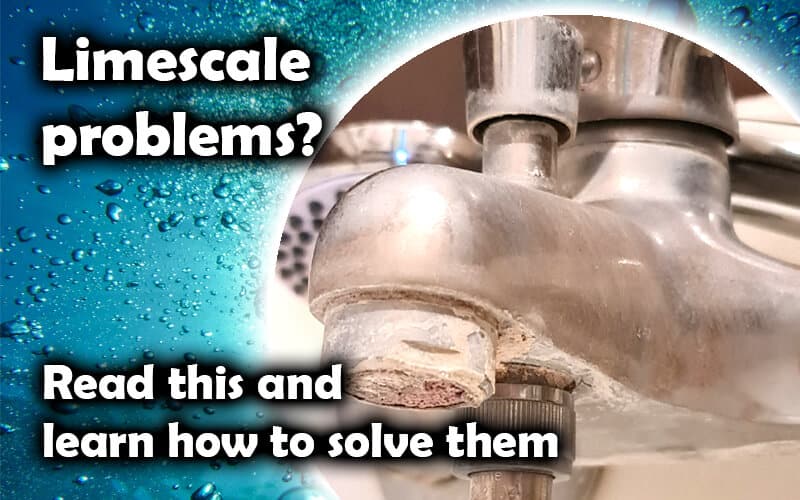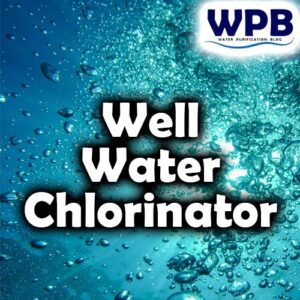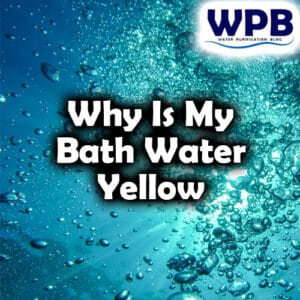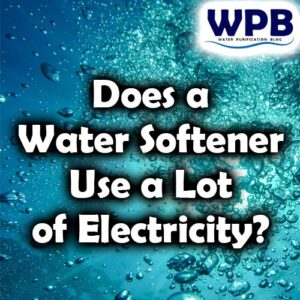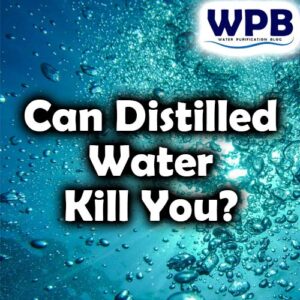All limescale deposits and hard water problems can be solved completely with water softeners. A water softening system is an ideal option to remove limescale minerals from your water and solve these problems forever.
Limescale problems and how to solve them now is a question for over 85% of households.
Limescale problems can have a big impact on the quality of life. Read through and see how a water softener can solve all these problems right now.

- Hard water and limescale problems you might have
- What is limescale?
- What is limescale and what causes hard water?
- How do you know if you have hard water
- Limescale problems caused by hard water
- Most common problems limescale makes in your household
- How do you get rid of limescale problems?
- How to fix hard water and forget about limescale problems?
- Water hardness – what is it?
- Sodium, Calcium, total hardness…
- So, which water softener should you chose to solve your limescale problems?
- Check out our latest posts
Hard water and limescale problems you might have
Hard water problems can be very frustrating, especially if you don’t have experience with these issues.
Solving hard water issues is very important to ensure a comfortable life in your home and a long lifetime of all your appliances using water. like a washing machine, dishwasher, hot water boiler and all other appliances in contact with hard water.
What is limescale?
Limescale is a hard, chalky deposit, consisting mainly of calcium carbonate (CaCO3).
It is a common problem in areas where the water is hard, and it can build up inside kettles, boilers, and pipework, especially that for hot water.
It is also often found as a similar deposit on the inner surfaces of old pipes and other surfaces where hard water has flowed.
What is limescale and what causes hard water?
Limescale build up is caused by the formation of calcium and magnesium limescale deposits hard water makes.
The more calcium and magnesium your water has, the harder it is and it makes more problems.
Your shower head gets clogged often, water flow decreases, limescale buildup happens fast, your coffee maker doesn’t work as it used, your washing machine breaks down often? Your hot water heater breaks down often or it needs a long time to heat up water?
All these problems are the signs of hard water and limescale problems in your home.
Hard water, and mineral deposits are the main reason for this.
How do you know if you have hard water
One of the simplest ways to know that you have hard water problem in your home is the excessive formation of soap scum.
There are also many simple strip testers that you can use to exactly measure your water hardness and see if you need a water softener.
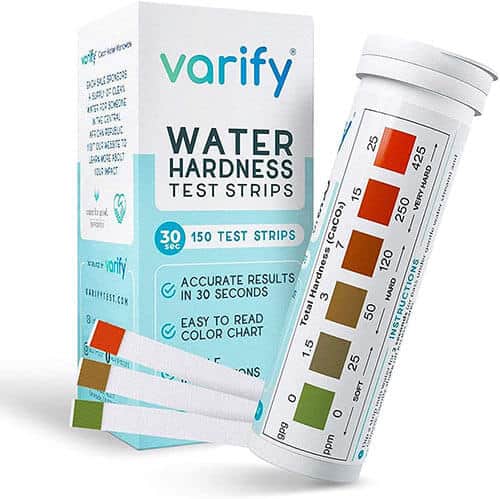
Water Hardness Test Kit – Fast and Accurate Cost Effective Water Hardness Test Strips
Save time and get accurate water test results within seconds. Simply take one of the provided test strips and dip the test strip into the water. Compare the test strip colors with the large color chart on the bottle. This is your water hardness result.
No need to visit a store or wait for someone else to test the quality of your water.
Enjoy consistently accurate and reliable results whenever you need them.
Ideal for you water softener operation control.
Limescale problems caused by hard water
While hard water poses no health risk, the build-up of mineral deposits that remain can affect all your home appliances, water pipes, and heaters, and can also reduce the effectiveness of soap and detergent.
Using hard water can even reduce clothing’s wearable lifespan by up to 40%.
Soap scum on bathtubs and showers can appear and it does not look nice.
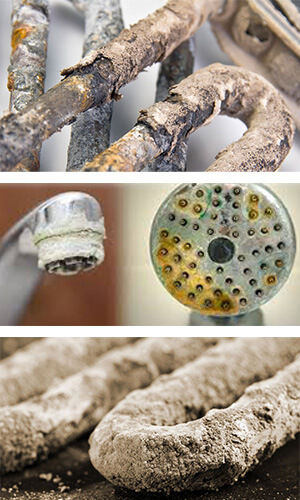
Most common problems limescale makes in your household
– mineral deposits in pipes, boilers, and all devices in contact with hard water
– hard to remove mineral deposits on glasses, dishes, shower cabins, glasses, etc…
– hard water leaves stains, deposits, and scale on sinks, sinks, bathtubs…
– rough towels and rough clothes are the result of washing in hard water
– higher consumption of soap, detergents, and other cleaning products is the result of using hard water
– when washing in hard water, the effectiveness of detergents and powders is reduced, which means increased consumption. As mineral deposits on the fibers, while washing clothes, they lose their elasticity and softness, and the result is washed clothes that are rough and unpleasant to the touch
– hard water significantly increases electricity costs. Even the smallest mineral deposits in boilers and other devices can lead to 20% higher electricity consumption
– about 20% higher costs of soap, shampoo, and various detergents when used with hard water
– mineral deposits in hot water heater means higher electricity costs
– sensitive skin irritation can be triggered by hard water baths
– your entire plumbing system can get clogged over years by using hard water
-limescale forms in all your home appliances, shower heads, glass shower doors, washing machines, water heater, and all bathroom fixtures
-limescale helps bacteria growth
– soft water usage solves all these limescale deposits problems
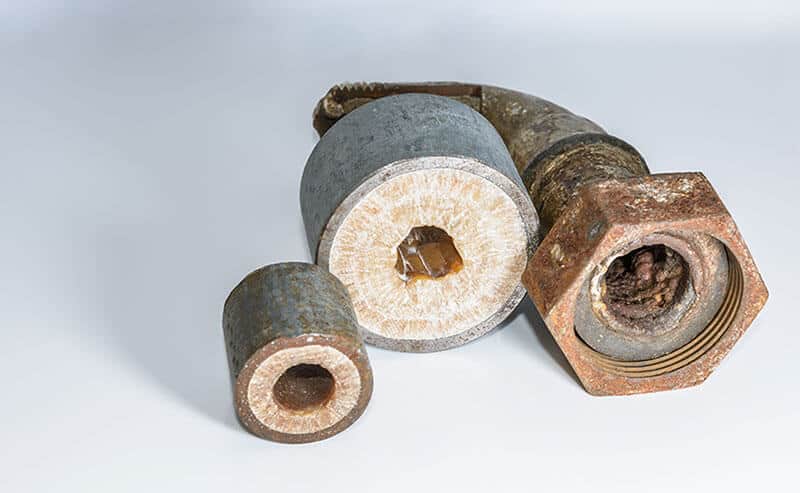
How do you get rid of limescale problems?
Use vinegar and lemon juice to wipe away limescale. Alternately mix 1 part lemon juice with 4 parts vinegar.
Use spray bottles to apply solution to tiles and plugholes. Give it soaking for 3-5 hours to remove stubborn scale traces and dust.
If you really want to get rid of limescale deposits in your home and protect all your home appliances, a water softener is the only way to forget about hard water deposits.
How to fix hard water and forget about limescale problems?
Water softeners remove hardness minerals and other substances that cause limescale.
There are many types of water softeners, so it’s important to choose the right one for your home. We will cover the water softener choices in another post.
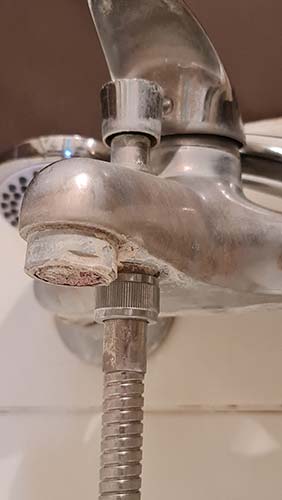
Water hardness – what is it?
We often talk about water of different qualities in our daily life and very often we are faced with certain problems caused by “hard” water. The total hardness of water (TH) consists of all calcium (Ca) and magnesium (Mg) salts dissolved in it.
The total hardness of water consists of two types of hardness, carbonate and non-carbonate. Carbonate hardness consists of calcium carbonate and magnesium bicarbonate.
Non-carbonate hardness consists of all their other salts such as chlorides, nitrates, sulfates, etc.
Sodium, Calcium, total hardness…
It is generally known that hard water causes the appearance of limescale, and the carbonate hardness is responsible for this.
Calcium and magnesium bicarbonate are unstable salts that, especially at elevated temperatures, decompose according to the following formulas:
Ca(HCO3)2 = CaCO3 + H2CO3 = CaCO3 + H2O + CO2
The same thing happens with magnesium bicarbonate:
Mg(HCO3)2 = MgCO3 + H2CO3 = MgCO3 + H2O + CO2
The resulting carbonates, CaCO3 and MgCO3, settle on the installations and create very hard deposits called scale. Scale is undesirable in all types of installations, as it reduces the cross-section of pipes, increases hydraulic resistance, and in thermal energy plants increases resistance in all types of heat exchange. It is known that larger scale deposits can also cause explosions in steam boilers.
Water hardness is also undesirable in all washing procedures. After washing in “hard” water, stains from precipitated limescale remain which are very difficult to remove, textiles washed in “hard” water become stiff due to the deposition of limescale on fine textile fibers, and washing in “hard” water consumes more detergent due to the reaction of detergents with salts of hardness and creation of insoluble soaps.
For all the listed reasons, the water is very often “softened”. Softening is the process of replacing calcium (Ca) and magnesium (Mg) ions from water hardness salts with sodium (Na) ions, and is carried out in devices called softeners. Softeners are devices filled with special ion exchange resins that perform this ion exchange.
Calcium and magnesium ions from water bind to the ion exchange resin, and an equivalent amount of sodium ions is released from the resin. Of course, this replacement cannot last indefinitely and is limited by the amount of sodium ions in the ion exchange resin of the softener.
So, by softening, calcium and magnesium salts are converted into an equivalent amount of sodium salts.
So, which water softener should you chose to solve your limescale problems?
There are many water softeners on the market and sometimes it is confusing to chose the right one.
Here are some of our favorites:
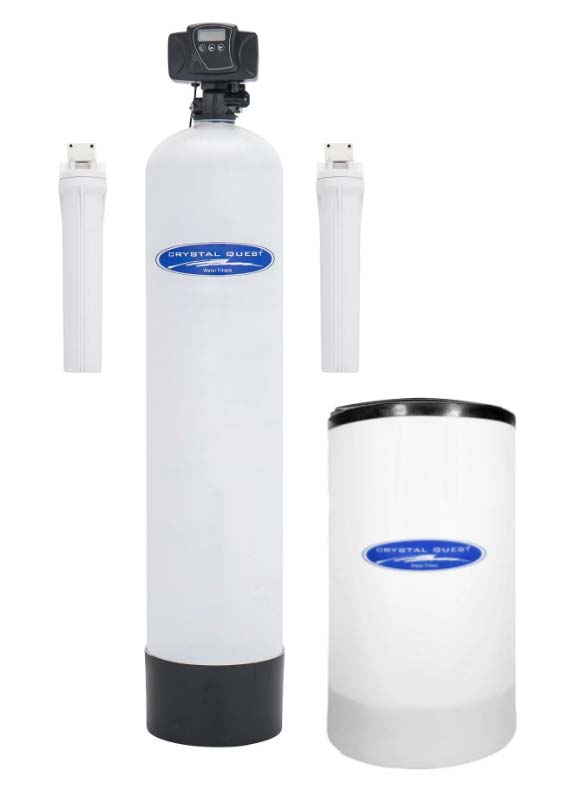
Whole House Water Softener with Pre/Post Filters
Automatic whole house water softener
- 20” sediment cartridge that removes sediment, silt, sand, and dirt
- Ion exchange water softener, 48,000-grain capacity, service flow: 9-11 GPM
- 20” solid carbon cartridge for removing volatile organic carbon compounds (VOCs), insecticides, pesticides and industrial solvents
Crystal Quest has been in the water filtration industry for over 30 years. The company manufactures water filtration and softeners products to a worldwide market for residential, industrial, or commercial use.
The company makes reverse osmosis solutions, water conditioning, water treatment, industrial water filters that can be used in beauty salons, apartments, clubs, government complexes, etc.

Who am I?
I am working as a water treatment technical manager and I have more than 25 years of practical experience in water purification.
Water purification expert
After many years of experience in water purification, I want to share some of my knowledge and get people to know the real importance of water quality.
Water purification and water treatment are very complex themes, so it is important to explain them in an easy-to-read way.
On this blog, you will find many understandable, easy-to-read information about water purification.
I hope you enjoy it, find some useful information, and thank You for reading.
More info on my work and my expertise on water purification can be found on my LinkedIn profile.

